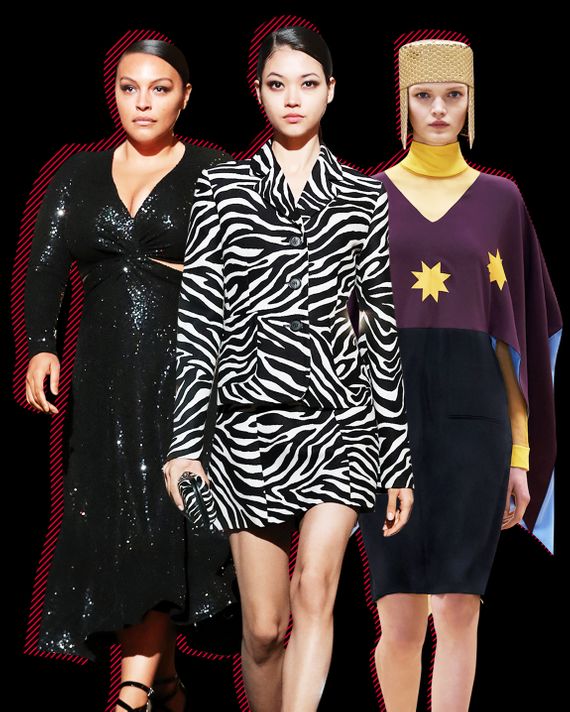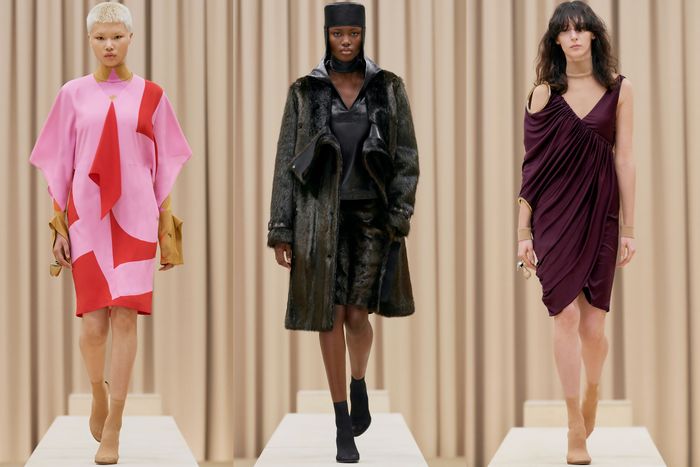
When I began covering fashion in 1986, for the Detroit News, Michael Kors had been showing his collections for only a few years. This was the era of the Antwerp Six, of the dueling egos of Versace and Armani, of Gaultier and Mugler, and it marked as well the rise of Helmut Lang, Martin Margiela, Romeo Gigli, Christian Lacroix, and Marc Jacobs, not to mention the enormous clout of Seventh Avenue’s “Big Five”: Bill Blass, Oscar de la Renta, Ralph Lauren, Donna Karan, and Calvin Klein. Under these circumstances, who noticed a nice guy from Long Island making blazers and linen dresses? Indeed, by the early ’90s, and for a variety of reasons, Kors’s business was in trouble, and he sought bankruptcy protection.
Now, many of those names have passed into oblivion or legend, and it’s Kors, along with Lauren, who still represents the example of the owner-creator, the stalwart, although both companies are public. Had Kors not taken the risk of doing a cheesy TV show called Project Runway, had he not partnered with the businessmen Lawrence Stroll and Silas Chou or found an ally in the chief executive John Idol, things might have gone differently. I once ran into Chou at a dinner party in Manhattan; he had just come from reviewing a new batch of finalists for the CFDA/Vogue Fund, and I asked him how they were. “Too much froufrou,” he replied, dismally. Well, froufrou — that is, fashionable nonsense — has never been Kors’s problem.
As we begin to emerge from the worst health crisis in modern history and, in the process, reassess values and assumptions, how we will dress — and shop and spend — has become an important consideration. Not only does it affect mental well-being as a return to something normal, but it is tied to the recovery of the restaurant, entertainment, and travel industries. As Kors put it in a Zoom presser before the release of his fall line, “I really wanted to make this collection about stepping out again, getting dressed, feeling polished.”
He showed the collection in the heart of the Theater District, on West 45th Street, with late-night catwalking by some of his favorite supers (Naomi Campbell, Shalom Harlow, Carolyn Murphy) and a preshow send-off at Sardi’s by some of Broadway’s biggest stars, including Bette Midler, Chita Rivera, and Sutton Foster, who appeared together on a bank of screens. Perhaps like a true New Yorker, Kors puts his money where his mouth is. This is his 40th anniversary in business, and he used the occasion not to tout his own wonderfulness but to enlist support for the Actors Fund. He also came up with his own version of the madeleine: He had boxes and boxes of fresh babkas, bagels, lox, and cream cheese dispatched to editors from Russ & Daughters, the landmark appetizing store on the Lower East Side.
But Kors’s real savvy was displayed in the collection — in the emphases on sharp tailoring, a practical feminine glamour, and a limited urban palette (black, white, camel, charcoal, and showstopping red). Who can say what people will want to wear six months from now? But I think Kors was right to stress polish and good grooming (sleek, pulled-back hair; slightly dramatic makeup; bare legs) and not muddle his message. He had in mind, he said, a woman entering a restaurant or theater for the first time in a year and turning heads. That meant a sleek pair of trousers and a matching shirt with a long white cashmere coat, or a shimmery silver minidress with a white tuxedo jacket tossed over the shoulders. He picked the clearest big-city archetypes possible — the tuxedo, the zebra or leopard pattern, the formal masculine topcoat, the shine of sequins — and made them attractive again. Many people would probably agree that this is a good place to start.
In what might have been the last look at the fall 2021 collections, Riccardo Tisci on Wednesday characterized his Burberry women’s show as “modern armor” — well, because women are warriors! Where have you heard that before?
Somehow, to my eye, Tisci’s hard, squared-off shoulders worked better in his men’s presentation, one of his best since he arrived at Burberry. Many of his women’s coats had extraneous flaps, straps, and wide cape backs, which seemed less armorlike than just plain bulky. Where he excelled was with the soft stuff — a simple, sexy, gathered dress in mulberry jersey and silky tops or dresses in geometric color blocks based on abstractions of flags. The flat-topped hats or helmets were Grace Jones–meets–Diana Rigg as Olenna Tyrell in Game of Thrones, and rather divine.







